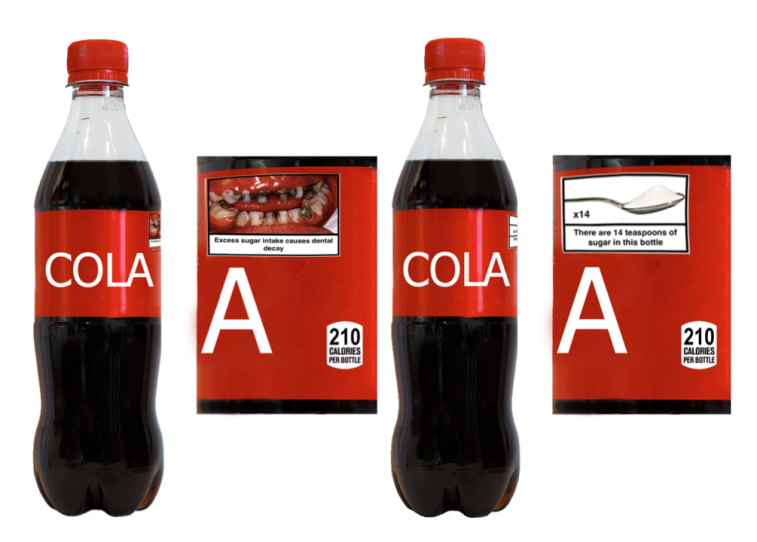 Our new study published in Preventive Medicine Reports on 23rd October 2018 indicates that placing image-based warning labels on SSBs reduced their selection by participating parents choosing a beverage for their children.
Our new study published in Preventive Medicine Reports on 23rd October 2018 indicates that placing image-based warning labels on SSBs reduced their selection by participating parents choosing a beverage for their children.
During the study, 2002 parents viewed a selection of sugary and non-sugary drinks online, presented either without a label, a calorie information label or an image-based warning with or without calorie information and were asked to choose one for their child to consume. The proportion of parents selecting a sugary drink was lower when the drinks were presented with an image-based warning, compared to when no label or just calorie information were used. The most effective label included the image of the rotting teeth.
The study indicates that image-based warning labels, especially those illustrating the health consequences of excess sugar consumption, have the potential to reduce the selection of SSBs by parents for their children.
To read the findings of the study in full, click on the link.
Impact of warning labels on sugar-sweetened beverages on parental selection: An online experimental study. Preventive Medicine Reports. E Mantzari, M Vasiljevic, I Turney, M Pilling, T Marteau.

 How should academic institutions—universities, funders, and journal editors— address academic misconduct of the type now known to have been committed by Brian Wansink, John Dyson professor of marketing at Cornell University? Wansink has had a total of 13 articles retracted as of 10 October 2018, following investigation by Cornell which found “misreporting of research data, problematic statistical techniques, failure to properly document and preserve research results, and inappropriate authorship.”
How should academic institutions—universities, funders, and journal editors— address academic misconduct of the type now known to have been committed by Brian Wansink, John Dyson professor of marketing at Cornell University? Wansink has had a total of 13 articles retracted as of 10 October 2018, following investigation by Cornell which found “misreporting of research data, problematic statistical techniques, failure to properly document and preserve research results, and inappropriate authorship.” In a new paper investigating public acceptability for policy interventions to improve health (published in Social Science and Medicine 4th October, 2018), researchers tested ways to communicate quantitative evidence of the effectiveness of a hypothetical tax on confectionery to help tackle childhood obesity.
In a new paper investigating public acceptability for policy interventions to improve health (published in Social Science and Medicine 4th October, 2018), researchers tested ways to communicate quantitative evidence of the effectiveness of a hypothetical tax on confectionery to help tackle childhood obesity.